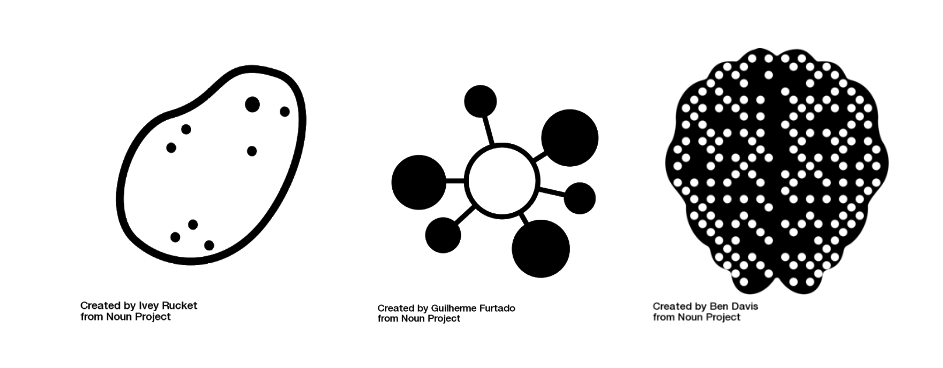16
Oriahna Nueske

Cognitive processes are complicated, and often I find myself wishing that life and people worked like computers. Life feels like it would be a lot simpler if every time I struggled with a task I could run a troubleshooting diagnostic and get a nice plan of action to fix all my operating issues. There are a lot of terms and metaphors to explain cognition that originate in computer technology but people are not, and do not work like computers (Kleinknecht, 2020). Phrases like short term memory and long term memory are examples of inaccurate computer-based terminology. In reality, cognition is a pattern of electric and chemical signals within our brains.
Information is gathered via lived experiences, which we then “store” in cell assemblies within the brain. These cell assemblies link together and activate together to act as our way of retaining information (Kleinknecht, 2020). Hebb’s rule is that neurons that fire together, wire together. This means that linked cell assemblies that fire together regularly in sequences become behaviors (Kleinknecht, 2012). The brain is divided anatomically into several structures with dedicated functions. Certain functions are specific to specific regions, but cognitive processes work in complex cell assemblies that form between and across multiple regions of the brain (Kesteren & Meeter, 2020).
Certain aspects of cognition and memory are made up of cells and tissues, but memory is a far less tangible series of actions. Memory works on a scale of schemas, concepts, categories, prototypes, and exemplars (Kleinknecht, 2012). Exemplars are singular experiences with something, anything, pick a noun. You might have an exemplar of potato that matches up with your experiences with what a potato is. Once this exemplar is formed, people have the ability to cognitively consider the relations between potato and relatable objects which are called categories. The fluid pacing between relating new information to pre-existing information is called a schema. Potato fits into a schema with the color brown, the smell of food, the smell of dirt, the color of dirt, the texture of dirt, essentially any and all things that could be associated with potatoes. Once a new concept has been established, it can be used in future schemas.
 Tightly grouped cells can activate as semantic knowledge which is the act of knowing information, episodic knowledge which is the act of reliving information, or some combination of both (Kesteren & Meeter, 2020). Declarative memory is the process of constructing and reconstructing knowledge stored in cell assemblies. It can be easy with previous descriptors of memory to conceptualize memory re-construction as retrieving a thought from the last place your brain stored it, but the action is much more like drawing a picture. Every time knowledge is retrieved it is entirely re-constructed, via established cell assemblies (Kesteren & Meeter). Re-constructed memories have similar results but every re-constructed memory will have slightly different processes and results. Embodied memories, or memories with encoded variability involving different cortices that form larger schemas will be easier to re-construct later.
Tightly grouped cells can activate as semantic knowledge which is the act of knowing information, episodic knowledge which is the act of reliving information, or some combination of both (Kesteren & Meeter, 2020). Declarative memory is the process of constructing and reconstructing knowledge stored in cell assemblies. It can be easy with previous descriptors of memory to conceptualize memory re-construction as retrieving a thought from the last place your brain stored it, but the action is much more like drawing a picture. Every time knowledge is retrieved it is entirely re-constructed, via established cell assemblies (Kesteren & Meeter). Re-constructed memories have similar results but every re-constructed memory will have slightly different processes and results. Embodied memories, or memories with encoded variability involving different cortices that form larger schemas will be easier to re-construct later.
Cognitive processes and memory are an important role in the context of an elementary school occupational therapist. Students with delayed or diminished fine motor skills will have individual backgrounds and needs to be addressed in care plans. Fine motor skills require focused frequent practice to develop properly, but to achieve maximum effect, care plans need to be more than just frequent and focused. Therapies need to address problems at their physical and neurological sources. To help children build healthy habits and skills, they need to build complex neural cell assemblies. This can best be achieved via embodied learning strategies (Kleinknecht, 2014; Kesteren & Meeter, 2020).
Embodied learning can be a difficult transition, many people incorrectly believe that students have individual learning styles, like being a tactile learner, or an auditory learner (Kleinknecht, 2012). These labels are selected by observing previous individual successes and preferences, then correlating their success to whatever study behavior was present at the time. These labels are intended to help set the child up for future success with lesson plans but actually serve to limit potential (Kleinknecht, 2014). I like to frame this as setting a child up for future experiences rather than limiting them by their past performances. Labels are also a huge part of schemas, wherein the label is a cue for the mind to reconstruct a pre-set of information, which can lead to unintentionally limiting consequences. Not only can these assigned labels limit which potentials students feel they can associate themselves within their internal schemas, these labels can also affect how the practitioner views individuals within their care. Care professionals may receive training on how to remain supportive and impartial, but no one is immune to developing harmful beliefs and stigmas (Kleinknecht, 2012).
Students in the care of an occupational therapist will all be individuals with separate needs, but embodied learning processes will be similar in everyone (Kleinknecht, 2014). Student support plans should be designed to have both diversity and depth (Kleinknecht, 2020). Therapists should aim for lessons and activities to stimulate different regions of the brain via multiple sensory inputs simultaneously. This will help form complex embodied neural circuits (Kesteren & Meeter, 2020). Complex and embodied neural circuits improve speed and likelihood of memory reconstruction when required later. Repetition is key to motor function exercises, but diversify the way actions are practiced. An OT could make a child practice pencil grip while tediously copying lines, or they could practice pencil grip while drawing, singing, or listening to music to incorporate an embodied learning style.
References
Kesteren, M. T. R. V., & Meeter, M. (2020). How to optimize knowledge construction in the brain. Npj Science of Learning, 5(1). https://doi.org/10.1038/s41539-020-0064-y
Kleinknecht, E. (2012, February 12). Lables on the Brain [web log]. https://cognitioneducation.me/2012/02/24/labels-on-the-brain/.
Kleinknecht, E. (2014, January 28). Embracing Embodiment. https://cognitioneducation.me/2014/01/18/embracing-embodiment/.
Kleinknecht, E. (2020, July). Cognitive Foundations. Week 1 Wed Psy 355 2020SU.
Kleinknecht, E. (2020, July). Cognitive Foundations. Week 1 Fri Psy 355 2020SU.
